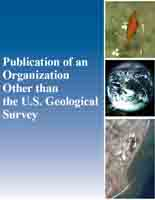Modeling coho salmon (Oncorhynchus kisutch) population response to streamflow and water temperature extremes
Links
- More information: Publisher Index Page (via DOI)
- Open Access Version: External Repository
- Download citation as: RIS | Dublin Core
Abstract
Models that assess the vulnerability of freshwater species to shifting environmental conditions do not always account for short-duration extremes, which are increasingly common. Life cycle models for Pacific salmon (Oncorhynchus spp.) generally focus on average conditions that fish experience during each life stage, yet many floods, low flows, and elevated water temperatures only last days to weeks. We developed a process-based life cycle model that links coho salmon (Oncorhynchus kisutch) abundance to daily streamflow and thermal regimes to assess: (1) “How does salmon abundance respond to short-duration floods, low flows, and high temperatures in glacier-, snow-, and rain-fed streams?” and (2) “How does the temporal resolution of flow and temperature data influence these responses?”. Our simulations indicate that short-duration extremes can reduce salmon abundance in some contexts. However, after daily flow and temperature data were aggregated into weekly and monthly averages, the impact of extreme events on populations declined. Our analysis demonstrates that novel modeling frameworks that capture daily variability in flow and temperature are needed to examine impacts of extreme events on Pacific salmon.
| Publication type | Article |
|---|---|
| Publication Subtype | Journal Article |
| Title | Modeling coho salmon (Oncorhynchus kisutch) population response to streamflow and water temperature extremes |
| DOI | 10.1139/cjfas-2022-0129 |
| Volume | 80 |
| Issue | 2 |
| Publication Date | January 06, 2023 |
| Year Published | 2023 |
| Language | English |
| Publisher | Canadian Science Publishing |
| Contributing office(s) | Coop Res Unit Seattle |
| Description | 18 p. |
| First page | 243 |
| Last page | 260 |


